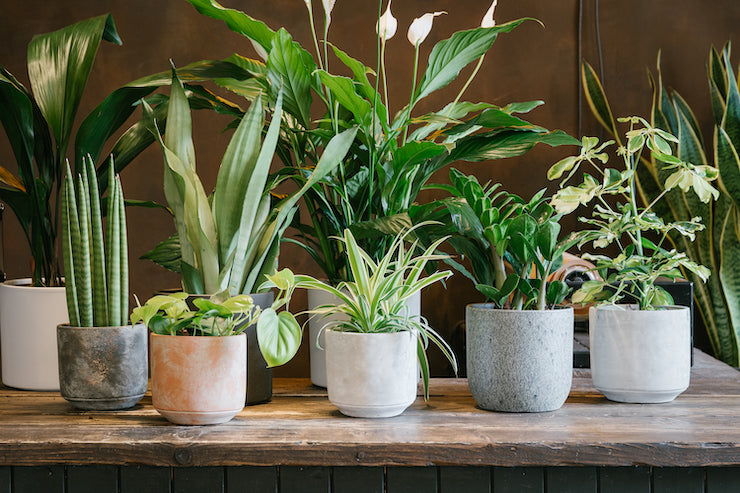
Caring for Tillandsia
The Tillandsia genus is a member of the Bromeliaceae family and they are closely related to Bromeliads. These fascinating plants get their common name ‘Air Plants’ as they do not grow in compost, instead they choose to root themselves onto the surface of tree trunks or rocks.
There are over 600 varieties of Tillandsia which can mainly be found growing across South America. Certain varieties such as the Tillandsia xerographica are favoured for the structural, curled leaves and can grow up to a whopping 3 foot in length. Our most popular variety is the Tillandsia usneoides. This variety is commonly referred to as Spanish Moss or Old Man's Beard due to its wiry, long trailing leaves.
During the growing season, Tillandsia can produce pink, purple or red flowers depending on the species. In the home it is common for Tillandsia to be displayed on bark, rocks or simply placed as it is.
Caring for Tillandsia in UK Homes
These plants do best in bright, indirect light as direct sun will cause the foliage to dry out.
Like most Epiphytes, these plants gain most of their moisture from rainfall and humidity. Mist them frequently throughout the week and, where possible, place in a bathroom or kitchen for extra humidity!
Humidity alone is not enough moisture for Tillandsia so ensure to dunk the plant into water every couple of weeks. When dunking, ensure you do not submerge the base of the plant. Once dunked, shake off excess water and place upside down to dry. This will prevent rot forming in the crown of the plant. Air plants prefer to be watered with distilled water. At home you can either collect rainwater or boil the kettle and allow the water to cool down completely before submerging the plants. Avoid placing Tillandsia too close to dry heat sources such as radiators or fireplaces as this will cause the plant to dry out.
During the growing season Tillandsia should be fed every 2 to 4 weeks, by diluting an orchid feed, or Liquid Gold Leaf, into the dunking water. Like all Bromeliads, once these plants have flowered the mother plant will die back completely. Before dying back, the plant will produce offsets or ‘pups’. Once the mother plant has died back completely it can be removed from the babies with clean, sharp scissors.
Tips and Tricks
Why is my Air Plant rotting?
Rot can easily form in the crown of Tillandsia if the plant is not tipped forward after watering. This results in water collecting in the base of the plant and eventually causing the base to go brown and squishy. Don’t think you have overwatered? Try using distilled water for watering and misting.
Why does my Air Plant look dehydrated?
One of the most common problems encountered with Tillandsia is dehydration. Many assume that, as these plants do not grow in compost, they do not require watering. Infrequent watering, a lack of humidity and high scorching temperatures can all result in the plant drying out.
My Tillandsia has flowered and is now dying.
Like all bromeliads, once the flowering is complete the bloom and mother plant will die back. These plants produce offshoots or pups that will continue to grow once the main plant has died back. Remove the dead plant with clean, sharp scissors.



